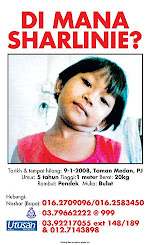 Nara (奈良市, Nara-shi?) is the capital city of Nara Prefecture in the Kansai region of Japan. The city occupies the northern part of Nara Prefecture, directly bordering Kyoto Prefecture. Eight temples, shrines and ruins in Nara, specifically Tōdai-ji, Saidai-ji, Kōfuku-ji, Kasuga Shrine, Gangō-ji, Yakushi-ji, Tōshōdai-ji and Heijō Palace Remains, together with Kasugayama Primeval Forest, collectively form "Historic Monuments of Ancient Nara", a UNESCO World Heritage Site.
Nara (奈良市, Nara-shi?) is the capital city of Nara Prefecture in the Kansai region of Japan. The city occupies the northern part of Nara Prefecture, directly bordering Kyoto Prefecture. Eight temples, shrines and ruins in Nara, specifically Tōdai-ji, Saidai-ji, Kōfuku-ji, Kasuga Shrine, Gangō-ji, Yakushi-ji, Tōshōdai-ji and Heijō Palace Remains, together with Kasugayama Primeval Forest, collectively form "Historic Monuments of Ancient Nara", a UNESCO World Heritage Site.  Nara was the capital of Japan from 710 to 784, lending its name to the Nara period. The original city, Heijō-kyō, was modelled after the capital of Tang Dynasty China, Chang'an (present-day Xi'an). According to the ancient Japanese book Nihon Shoki, the name "Nara" derived from the Japanese word narashita meaning "made flat". The temples of Nara remained powerful even beyond the move of the political capital to Heian-kyō in 794, thus giving Nara a synonym of Nanto (lit. meaning "South Capital") as opposed to Heian-kyō, situated in the North.
Nara was the capital of Japan from 710 to 784, lending its name to the Nara period. The original city, Heijō-kyō, was modelled after the capital of Tang Dynasty China, Chang'an (present-day Xi'an). According to the ancient Japanese book Nihon Shoki, the name "Nara" derived from the Japanese word narashita meaning "made flat". The temples of Nara remained powerful even beyond the move of the political capital to Heian-kyō in 794, thus giving Nara a synonym of Nanto (lit. meaning "South Capital") as opposed to Heian-kyō, situated in the North. The city of Nara lies in the north end of Nara Prefecture, directly bordering itself to Kyoto Prefecture in its north side. The city is 22.22 km from North to South, and 33.51 km from East to West. As a result of the latest merger, effective April 1st 2005, that combined the villages of Tsuge and Tsukigase into the city of Nara, the city now borders directly to Mie Prefecture in its east as well. The total area is 276.84 km².

The downtown of Nara is on the east side of the ancient Heijō Palace site, occupying the northern part of what was called the Gekyō (外京), literally the outer capital area. Many of the public offices (eg. the Municipal office, the Nara Prefectural government, the Nara Police headquarter, etc.) are located on Nijō-ōji (二条大路), while Nara branch offices of major nationwide banks are on Sanjō-ōji (三条大路), both avenues running east-west.
As of 2005, the city has an estimated population of 373,189 and the density of 1,348 persons per km². There were 147,966 households residing in Nara.















.JPG)












